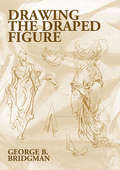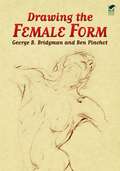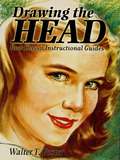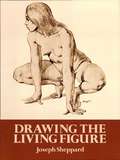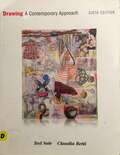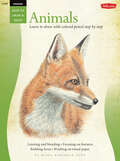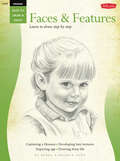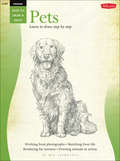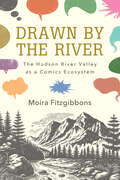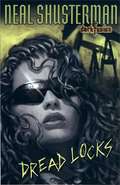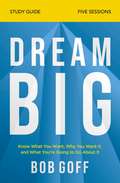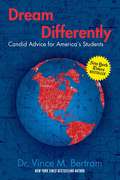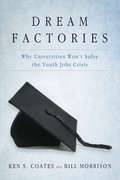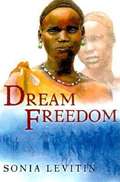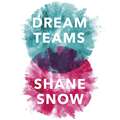- Table View
- List View
Drawing on The Dominant Eye: Decoding the Way We Perceive, Create, and Learn
by Betty EdwardsA fascinating follow-up to the beloved bestseller Drawing on the Right Side of the Brain--with new insights about creativity and our unique way of seeing the world around usMillions of readers have embraced art teacher Betty Edwards's Drawing on the Right Side of the Brain, from art students and teachers to established artists, corporate trainers, and more--all discovering a bold new way of drawing and problem-solving based on what we see, not what we think we see. In this highly anticipated follow-up, Edwards illuminates another piece of the creativity puzzle, revealing the role our dominant eye plays in how we perceive, create, and are seen by those around us. Research shows that much like being right-handed or left-handed, each of us has a dominant eye, corresponding to the dominant side of our brain--either verbal or perceptual. Once you learn the difference and try your hand at the simple drawing exercises, you'll gain fresh insights into how you perceive, think, and create. You'll learn how to not just look but truly see.Generously illustrated with visual examples, this remarkable guided tour through art history, psychology, and the creative process is a must-read for anyone looking for a richer understanding of our art, our minds, and ourselves.
Drawing on the Right Side of the Brain: The Definitive, 4th Edition
by Betty EdwardsA revised edition of the classic bestselling how to draw book. A life-changing book, this fully revised and updated edition of Drawing on the Right Side of the Brain is destined to inspire generations of readers and artists to come. Translated into more than seventeen languages, Drawing on the Right Side of the Brain is the world's most widely used instructional drawing book. Whether you are drawing as a professional artist, as an artist in training, or as a hobby, this book will give you greater confidence in your ability and deepen your artistic perception, as well as foster a new appreciation of the world around you. This revised/updated fourth edition includes: • a new preface and introduction; • crucial updates based on recent research on the brain's plasticity and the enormous value of learning new skills/ utilizing the right hemisphere of the brain; • new focus on how the ability to draw on the strengths of the right hemisphere can serve as an antidote to the increasing left-brain emphasis in American life-the worship of all that is linear, analytic, digital, etc.; • an informative section that addresses recent research linking early childhood "scribbling" to later language development and the importance of parental encouragement of this activity; • and new reproductions of master drawings throughoutFrom the Trade Paperback edition.
Drawing the Draped Figure
by George B. BridgmanMany art students and professionals have mastered the art of depicting unclothed figures, but still have trouble accurately rendering clothing or other forms of draped cloth. Part of the problem — before this book came along — was that there was a lack of concise and simple instruction on the subject, and much that was written was too vague to be helpful. This comprehensive, well-illustrated book was created to solve the problem.In these pages George Bridgman — a longtime instructor at New York's Art Student League and one of the nation's foremost teachers of figure drawing — offers expert advice on depicting draped figures. "Clothing is none other than a drapery arranged around a body that is beneath it. To express the multitudinous forms it takes, one should learn to express in a direct way the different characters of folds, for each one plays its individual part as distinctly apart as actors play their different characters upon the stage."Students learn the characteristics of seven different kinds of folds and how to render them, including pipe, zigzag, spiral, half-lock, diaper pattern, drop, and inert folds. Mastery of these principles is the key to realistic portrayal of garments, as well as the proper rendering of cloth in still lifes. The straightforward, easy-to-follow text is illustrated by 200 of Bridgman's own sketches and diagrams, reproduced from pencil renderings in crisp halftones. Art students, teachers, and professionals alike are sure to welcome this inexpensive republication of a practical, hands-on manual by a master of figure drawing.
Drawing the Female Form
by George B. Bridgman Ben PinchotDesigned primarily for beginning artists, this excellent reference combines the precise results of the photographed figure with progressive drawings by a noted figure-drawing teacher whose works on anatomy have become classic references for art students.The well-illustrated manual provides painters, illustrators, and sculptors with invaluable instructions on rendering the intricacies of the female figure. George Bridgman's use of photographs and his drawings provide beginning artists with a suitable alternative to the use of costly live models for drawing exercises and studies in musculature and light.
Drawing the Head: Four Classic Instructional Guides
by Walter T. FosterAn accomplished artist and teacher, Walter T. Foster began producing his classic art instruction books in the 1920s. He wrote, illustrated, printed, bound, packaged, shipped, and distributed his books from his own home for decades, before moving the business to a commercial facility to accommodate his international trade. This comprehensive volume combines four of the artist's vintage instructional manuals to form an essential guide to illustrating the head and face. "Let your drawing be simple," Foster advises, and suggests that art students begin with the profile. Leave out unnecessary details until the basic shapes are in place. Then add the expressions that make the face the most interesting of all subjects. Instructions include step-by-step diagrams using charcoal, crayon, pencil, and brush to create finished portraits, plus tips on materials. With an array of subjects that include men, women, and children of various ages and ethnic types, this guide captures the mid-twentieth-century style of illustration to inspire today's artists.
Drawing the Line: Technical Hand Drafting for Film and Television
by David McHenryDrawing the Line: Technical Hand Drafting for Film and Television is the essential resource for students and aspiring professionals studying and working in film and television design. The book covers all aspects of scenic drafting by hand – a technique still used in film and television because of its unparalleled emotive and aesthetic qualities. Discover how to draw the iconic scroll of a classical column or learn the difference between Flemish bond and English bond brickwork – it is all here! Other key features include the following: Beautifully illustrated, approachable, step-by-step instructions for every aspect of scenic drafting – specific to film and television; Illustrated explanations of camera lenses, including calculating aspect ratios and projections; Coverage of the four types of drafting projection: isometric, oblique, orthographic and axonometric; A comprehensive glossary of terms, including an illustration of each entry. This beautiful book is clear, accessible, and a must-have for any student aspiring to work in film and television design.
Drawing the Living Figure
by Joseph Sheppard"Joseph Sheppard has been favorably compared to practically every Renaissance master...he is without peer among modern realists for his ability to impart a warm verisimilitude to the figure." -- Artspeak magazine.In this highly praised guidebook, Joseph Sheppard, a versatile and influential artist and teacher who is widely recognized as a master of figure drawing, introduces an innovative approach to drawing the human form. Beginning by reviewing the basics of anatomy, he makes his principal focus the specifics of surface anatomy.Rather than depicting in detail the muscles and bone that lie beneath the skin, as do most books on artistic anatomy, this book concentrates on how the position and movement of muscles and bones affect the surface forms of live models. The effects are masterfully demonstrated in over 170 of Joseph Sheppard's own drawings of many different live models in front, back, and side views, and in various standing, sitting, kneeling, crouching, reclining, and twisting poses.Each drawing is accompanied by two diagrams, one for bones, one for muscles, which specifically show how surface forms are created by the definitive shapes beneath the skin. The superb quality of Joseph Sheppard's drawings, the wide range of poses he illustrates, and the effectiveness of his approach in this book -- now in its first paperback edition -- will help artists at all levels improve and refine their skills in drawing the living figure.
Drawing: A Contemporary Approach
by Teel Sale Claudia BettiDRAWING: A CONTEMPORARY APPROACH takes you beyond conventional approaches, emphasizing the emotional, intellectual, spiritual, and social significance of art. The authors trace the evolution of today's art from that of the past, showing drawing's meaning and continuity. DRAWING: A CONTEMPORARY APPROACH offers a combination of effective pedagogy, good exercises, and high-quality, contemporary drawings as models, focusing on contemporary artists who draw in a multicultural world
Drawing: Dogs & Cats (How to Draw & Paint)
by Nolon StaceyWhether they prefer the company of dogs, cats, or both, aspiring artists will learn how to create faithful depictions of all their furry friends with this essential drawing book. Inside, gifted artist Nolon Stacey provides fundamental techniques and complete instructions for drawing several different breeds of cats, kittens, dogs, and puppies. He also demonstrates how to portray specific canine and feline features––such as perky ears, wayward whiskers, and playful paws. Readers also will learn how to achieve accurate proportions and capture the priceless expressions that make dogs and cats so utterly irresistible! Packed with helpful tips and extraordinarily realistic drawings, this book is a “must-have” for every pet-loving artist.
Drawing: Learn How to Draw with Colored Pencil, Step-by-Step (How to Draw & Paint)
by Debra Kauffman YaunAn easy to read, how-to guide with complete instructions for creating lifelike portraits of wild and domestic animals using colored pencils.In this comprehensive, thirty-two–page book, accomplished artist Debra Kauffman Yaun shares her artistic insights and techniques for creating strikingly realistic animal drawings in colored pencil. The book opens with essential information on choosing tools and materials, understanding color theory, and creating basic pencil strokes. It then covers special colored pencil techniques, such as hatching, burnishing, layering, and blending. Finally, the author demonstrates how to accurately depict an assortment of adorable animals—including favorite family pets, wildlife, and birds—in a series of clear, step-by-step lessons. In-depth, easy-to-follow instructions allow aspiring artists to develop their drawing skills, guiding them from simple sketches to the final flourishes.
Drawing: Learn To Draw Step By Step (How to Draw & Paint)
by Deborah Kauffman YaunThe award-winning artist and author teaches readers how to understand anatomy, draw hands and feet, capture movement, and incorporate colored pencil. This new addition to the bestselling Drawing category of our How to Draw and Paint Series shows aspiring artists how to depict a variety of people in pencil from a ballerina to soccer player. Accomplished artist Debra Kauffman Yaun introduces readers to drawing supplies and basic techniques, as well as to the essential elements of full-figure anatomy; then she guides artists through a collection of step-by-step projects, starting each with a simple sketch and ending with a beautifully rendered portrait. Debra even includes information on adding color to drawings, sharing her extensive knowledge of colored pencil. Featuring a range of people of different ages and ethnicities, this book is sure to educate and inspire.
Drawing: Learn To Draw Step By Step (How to Draw & Paint)
by Debra Kauffman YaunTechniques, tips, and exercises for capturing the expressiveness of the human face in your drawings, step by step.Successfully drawing the human face is one of the most challenging yet rewarding artistic experiences. In this step-by-step book, Debra Kauffman Yaun invites you into her artistic world as she shows you how to draw a variety of portraits in pencil.She shares her personal methods for rendering the human face in all its expressiveness as she introduces tips and techniques for approaching babies, children, teenagers, and adults of all ages. The book includes in-depth information on specific facial features as well as detailed, step-by-step exercises that explore ways to develop complete portraits. And the wealth of beautiful, inspiring examples ensure that Faces & Features will be a welcome addition to any artist’s drawing reference library.
Drawing: Pets (How to Draw & Paint)
by Mia TavonattiSeventeen pet portraits—from a sleek ferret to a majestic horse—plus tips on sketching from photos, rendering fur textures, and drawing animals in action.This is the perfect introductory kit for anyone who wants to learn how to depict a variety of irresistible pets in pencil. Inside is everything aspiring artists need to get started, presenting the basics of drawing in pencil and offering in-depth information on tools before guiding beginners through seventeen demonstrations—each accompanied by clear, step-by-step instructions. From traditional dogs and cats to more exotic reptiles and birds, this kit features a number of inspiring drawings that are sure to appeal to any pet-loving artist.
Drawings of People by the Under-5s
by Dr Maureen Cox Maureen CoxThis work traces the development of the human figure in children's drawings, showing how children add to and alter their figures as they get older and more skilful. It discusses why children's drawings often seem so bizarre to adults, revealing what these figures tell as about the child's Intelligence Or Emotional Stability.; The Book Is Based In Examples From hundreds of children, but concentrates on a particular set of drawings gathered from one group of children attending a nursery. Also featured are drawings by children with learning difficulties, so that readers may see and learn from the different developmental patterns in the drawing of human figures. Additionally, the book makes comparisons of drawings by children in different cultures.
Drawn by the River: The Hudson River Valley as a Comics Ecosystem (SUNY series, An American Region: Studies in the Hudson Valley)
by Moira FitzgibbonsPlaces comics studies in lively dialogue with landscape art and regional studies to shed new light on the Hudson River Valley as an artistic, social, cultural, and natural environment.Drawn by the River engages readers in a lively exploration of the interplay between comics and regional culture. Connecting comics, cartoons, and animated films to Hudson River School landscapes and to the valley’s industrial history, Drawn by the River demonstrates the varied and overlapping ecosystems that have generated creative work in the area. The book tells of the massive impact of the Western Printing facility, the stunning success of the valley-based creators of the fantasy series ElfQuest, the surprising connections between landscapes and comic art, and the experiences of comics writers, artists, and editors past and present who have called the Hudson River Valley home. Richly illustrated with over one hundred images, Drawn by the River provides new frameworks for understanding comics and the culture, history, and community of the Hudson River Valley.
Drawn from Life: Tips and Tricks for Contemporary Life Drawing
by Helen BirchThe author of Just Draw Botanicals &“helps readers tap into rich traditions of life drawing, demonstrating how to use everyday people as muses&” (Library Journal). Drawn from Life offers bite-size lessons that will help anyone master the classic practice of life drawing. Over 100 pieces of art by contemporary artists illustrate fundamentals such as line, contour, and color, plus surprising and innovative techniques that will take your drawings to the next level. Showcasing a wide range of styles and methods, this is a refreshing new guide to a timeless art form. &“This beautiful little book details various drawing styles from a variety of artists. You&’ll be inspired to draw as soon as you pick it up!&” —Mindful Art Studio &“An insightful book . . . The ideas and tips are great for practice and further exploration.&” —Parka Blogs
Drawn to See: Drawing As An Ethnographic Method
by Andrew CauseyIn this meditation/how-to guide on drawing as an ethnographic method, Andrew Causey offers insights, inspiration, practical techniques, and encouragement for social scientists interested in exploring drawing as a way of translating what they "see" during their research.
Dread Locks
by Neal ShustermanA new series that combines elements of legends, myths, and fairy tales begins. Bored with life, 14-year-old Parker Bear perks up when a new girl arrives in town. Tara always wears designer sunglasses. When Parker realizes Tara's "friends" at school are developing strange quirks, he is too embroiled in his own cravings to stop her.
Dream Big Bible Study Guide: Know What You Want, Why You Want It, and What You’re Going to Do About It
by Bob GoffRediscover how to pursue your dreams, see beyond limitations, and find clarity in God's plan for your life. Once upon a time we had big dreams. But life became a maze of responsibilities, obligations, and expectations. Maybe we see that there's more to life and more to faith, but we're distracted by the next crisis or urgent diversion, and that stirring of purpose always seems out of reach. We still have dreams, but we're no longer in touch with them...This video Bible study (DVD/digital downloads sold separately) will help you understand that God has a plan for your life. Bestselling author Bob Goff provides a step-by-step road map to breaking through the barriers that are holding you back. Each of the five sessions explores a different aspect of what it means to dream big:Get Ready to Dream Big – Before he healed him, Jesus asked the blind man, "Do you want to get well?" You have to want to dream again before you can come to any clear idea about who you are.Set Absurd Expectations – Dreaming big requires you to suspend your practical way of seeing things long enough to look beyond logistics and limitations.Clear the Path – Discover new paths through places you previously assumed were impassable by looking at the reasons you think you can't pursue your dreams.Push Through Setbacks – Learn to push through your fear of another failure by exploring the story of Peter trying to walk on water.Land the Plane – Time to advance from ideas and get started by taking action with real steps.If anyone knows how to live life to the fullest, it's Bob Goff. He's already dazzled readers with his audacious, live-out-loud approach and stories told in Love Does and Everybody, Always. Yet as unique as Bob might seem, he had to make his own choice to dream big, and he wants to take you and your study group on this journey and help you rediscover the dreams God has for you and to turn them into reality.No matter where you are in life, it's not too late to dream big.Designed for use with the Dream Big Video Study available on DVD or streaming video, sold separately.
Dream Differently: Candid Advice for America's Students
by Dr Vince M. BertramTo get the most out of your college education, you need to choose your classes wisely -- and increasingly, that means choosing STEM. Today's job seekers should have at least a basic understanding of trigonometry and other science, technology, engineering, and math (STEM) fields. The U.S. Bureau of Labor Statistics projects more than 1.3 million job openings in math and computer-related fields by 2022. The purpose of this book is not to push you into a STEM career; it is simply to provide you with information and perspective, as well as a few questions that, if answered honestly, will help you plot out an educational and career pathway that will help you achieve your dreams.
Dream Factories: Why Universities Won't Solve the Youth Jobs Crisis
by Ken S. Coates Bill MorrisonTwo professors look at the mystique around universities and the consequences of “credentialism.” For decades, we have promoted the idea that a university degree is a passport to future career success. Ken Coates and Bill Morrison argue that the over-promotion of higher education and university degrees is actually undermining the lives of young people, saddling them with enormous debts, and costing governments huge amounts of money. As the young flock to universities in ever-increasing numbers, fewer of them than ever find the elusive “good jobs” that they are pursuing. In fact, many of those jobs no longer exist. We are in the midst of a youth employment crisis that is global in proportion, and we are facing serious misunderstandings about the unfolding career prospects for young adults entering a world of rapid technological change. Ken Coates and Bill Morrison explore the impacts of universities turning out graduates with the wrong skills, and the consequences of vanishing job opportunities.
Dream Freedom
by Sonia LevitinSlavery still exists in some parts of the world, even in the year 2000. In Sudan, tens of thousands of men, women, and children of the Dinka and Nuba tribes are regularly captured, taken from their homes and families, and forced into hard labor. Based on a true story and real-life contemporary events, this novel tells how a group of students in Denver, Colorado, learns of the atrocities in Sudan, and how they begin to make a difference -- raising money to "redeem" slaves and educating others about this dire situation.
Dream School: Finding the College That's Right for You
by Jeffrey SelingoNew York Times Bestseller! From the bestselling author of Who Gets In and Why, a must-have playbook for families coping with a more stressful era of startling low admission rates and sky-high prices—one that widens the aperture beyond the Top 25 schools and connects students, parents, and counselors with quality, affordable choices.Attending college has long been a rite of passage for millions of teens and a bedrock of the American dream. But that well-worn path has lately taken a wrong turn, denying admission even to super-achievers and putting intolerable stress on family finances. Now, in Dream School Jeffrey Selingo shifts the spotlight from how colleges pick students to how students can better pick colleges. With test-optional policies and grade inflation leveling the playing field for applicants, getting into prestigious schools has become a kind of lottery. &“Plan A&” may work out, but increasingly it isn&’t—so Selingo urges families to ditch the &“Top 25 or bust&” mindset and look beyond the usual suspects. Hidden-gem schools with incredible value and rich opportunities are waiting to be discovered. Backed by unparalleled research—and an eye-opening survey of more than 3,000 parents—Dream School reveals what really matters in a college: strong job prospects after graduation, hands-on learning experiences, and a sense of belonging. To help students find their perfect match, Selingo highlights 75 accessible and affordable colleges that will satisfy those priorities. Organized into three easy-to-digest sections, Dream School explains why elite college degrees turn out to matter less than you think, why many parents and students are choosing value over prestige, and how to make sure the degree really pays off. In these pages, Selingo&’s engaging style and expert insights turn what is often an unnavigable maze into a clear roadmap. Destined to become the ultimate guide for families crossing the perilous college admissions landscape, Dream School isn&’t just a book—it&’s a lifeline for those who can find themselves trapped in an overwhelming process.
Dream Teams: Working Together Without Falling Apart
by Shane Snow'An adventure into the very human science of making breakthroughs together.' - Charles Duhigg, Pulitzer Prize-winning journalist and author of The Power of HabitThe best groups are more than the sum of their parts - but why does teamwork so often fail to fulfill this promise? Award-winning entrepreneur and journalist Shane Snow takes us on an extraordinary tour of the hidden science of team dynamics, revealing the counterintuitive reasons that some groups break out while far too many break down.Examining history-making groups like the Wu Tang Clan and the Russian national hockey side alongside teams whose failures have had lasting impact, Snow reveals the answers, and what the rest of us can learn from the rare teams that do the impossible together. In this stimulating, pacey adventure through history, neuroscience, psychology, sports and business, Snow explores the secrets of the best teams the world has to offer. You'll discover: - How ragtag teams - from soccer clubs to startups to gangs of pirates - beat the odds throughout history- Why DaimlerChrysler flopped while the Wu-Tang Clan succeeded, and the surprising factor behind most failed mergers, marriages, and partnerships- What the Wright Brothers' daily arguments can teach us about group problem solving- The true stories of pioneering women in law enforcement, unlikely civil rights collaborators, and underdog armies that did the incredible together- The team players behind great social movements in history, and the science of becoming open-minded.Provocative and entertaining, Dream Teams is a landmark work that will change the way we think about progress and collaboration.
Dream Teams: Working Together Without Falling Apart
by Shane Snow'An adventure into the very human science of making breakthroughs together.' - Charles Duhigg, Pulitzer Prize-winning journalist and author of The Power of HabitThe best groups are more than the sum of their parts - but why does teamwork so often fail to fulfill this promise? Award-winning entrepreneur and journalist Shane Snow takes us on an extraordinary tour of the hidden science of team dynamics, revealing the counterintuitive reasons that some groups break out while far too many break down.Examining history-making groups like the Wu Tang Clan and the Russian national hockey side alongside teams whose failures have had lasting impact, Snow reveals the answers, and what the rest of us can learn from the rare teams that do the impossible together. In this stimulating, pacey adventure through history, neuroscience, psychology, sports and business, Snow explores the secrets of the best teams the world has to offer. You'll discover: - How ragtag teams - from soccer clubs to startups to gangs of pirates - beat the odds throughout history- Why DaimlerChrysler flopped while the Wu-Tang Clan succeeded, and the surprising factor behind most failed mergers, marriages, and partnerships- What the Wright Brothers' daily arguments can teach us about group problem solving- The true stories of pioneering women in law enforcement, unlikely civil rights collaborators, and underdog armies that did the incredible together- The team players behind great social movements in history, and the science of becoming open-minded.Provocative and entertaining, Dream Teams is a landmark work that will change the way we think about progress and collaboration.


